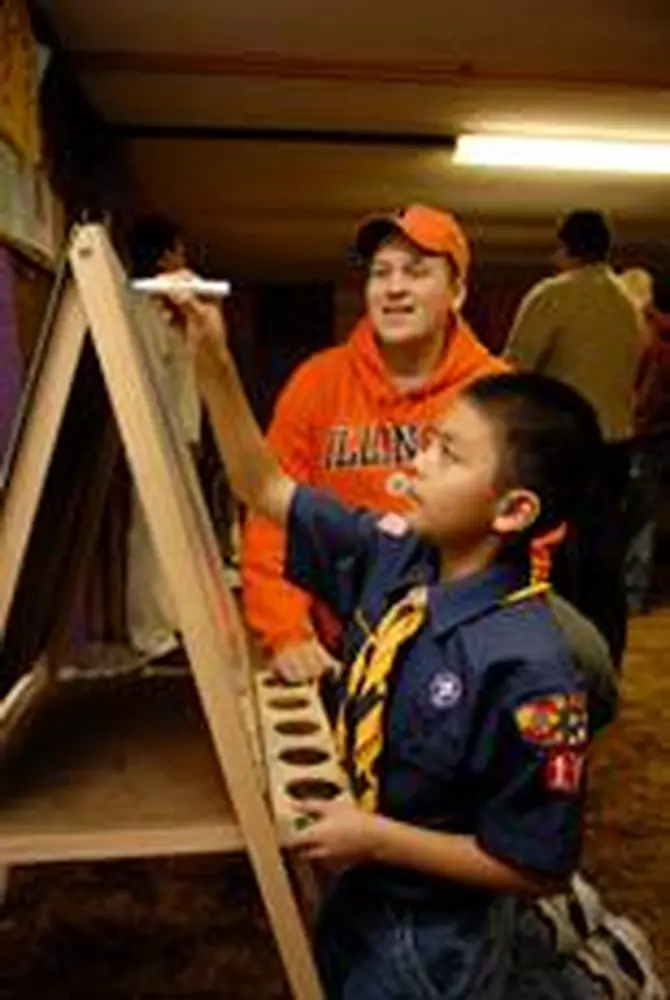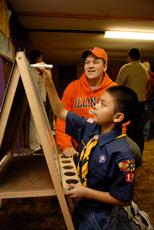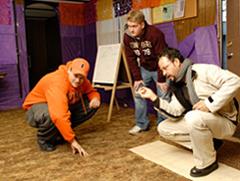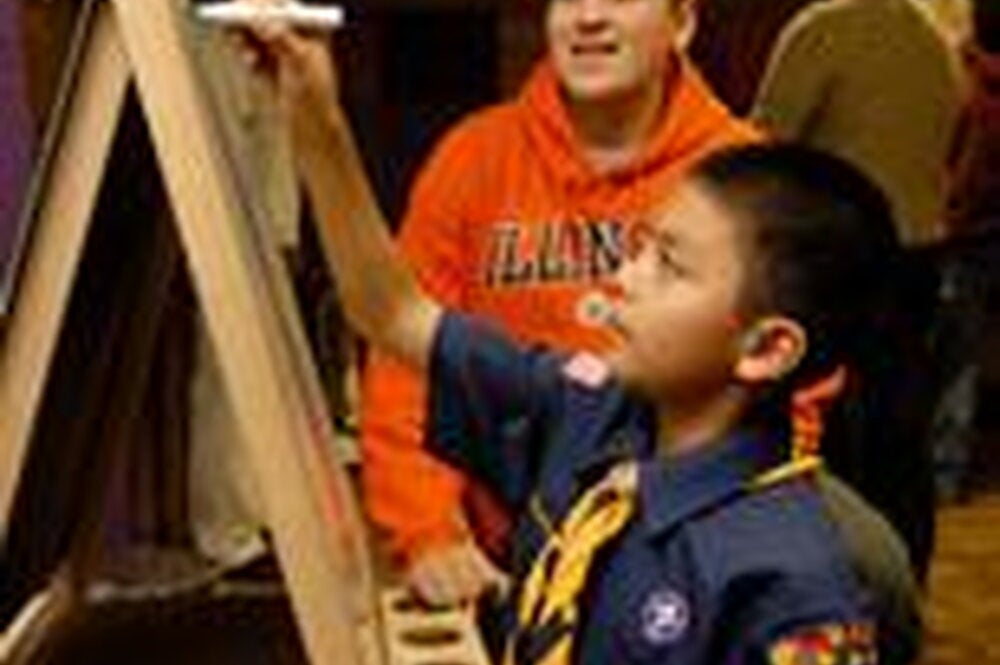

Ann Abbott tells her students to recognize opportunity, and a few years ago she had these cards in hand: A frustration with classroom learning, plenty of undergrads, and word of a community aid organization that needed Spanish speakers.
Her move, in fall 2004, was to create a test program in which a dozen students from one of her Spanish courses learned the language under the roof of Urbana's East Central Illinois Refugee Mutual Assistance Center, where they assisted native Spanish speakers in need.
The idea met with such success that she expanded the program, and this spring Abbott, an LAS assistant professor of Spanish at the University of Illinois, expects to oversee 130 students helping eight schools and service organizations in Champaign-Urbana connect with a growing Spanish-speaking population.
While the majority of the students she deploys are fulfilling course requirements in two of her Spanish courses—Spanish 232 (Spanish in the Community) and Spanish 332 (Spanish and Entrepreneurship)—Abbott also runs a non-credit, paid intern program in the summer for a handful of students who assist organizations throughout Illinois.
The results, Abbott says, are "overwhelmingly positive." She says there always comes a point where advanced Spanish language students are held back by the traditional classroom experience, but the community program allows them to improve their skills and learn Latino culture while doing a service.

Students in the two classes are required to spend two hours a week volunteering at one of the sites and another two hours in class. Abbott says a small number of students don't like finding their way around off-campus, but the vast majority feel it's for their benefit.
"I had a student say to me, ‘I've never seen poverty before,'" Abbott recalls. "They say, ‘I feel like I'm really putting my Spanish to use,' and ‘This is real Spanish, not textbook Spanish. I'm learning so much about the Latino community that I didn't know before.'"
Senior Amy Lewensky declared Spanish as her major after taking Abbott's course. During Spanish 332 she worked with third and fourth graders at Booker T. Washington Elementary School in Champaign, and she later worked as a summer intern at Central States Service, Employment and Redevelopment, in Little Village, a predominantly Latino neighborhood on Chicago's west side.
She taught English as a Second Language at Central States and the students liked her. Lewensky was likewise impressed by the students' motivation, and the following summer, in 2007, the organization brought her back, this time out of its own pocket.
"I think what I've gained the most knowledge in is the Latino culture," Lewensky says.
Abbott says most university Spanish departments are not doing programs like this. Her program has been helped along with several internal grants, and she hopes the effort will continue to draw support. It continues to grow, she adds, with Habitat for Humanity as the latest on their list of programs to support.
"It surprises people," she says, of the community-based learning program. "A lot of people are not expecting to see something like this in Spanish…but it makes a lot of sense."
